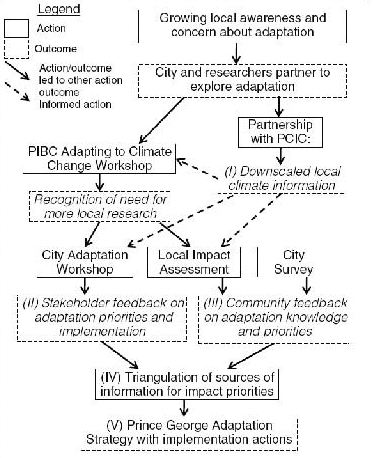Today we review a study that describes the steps by a small mountain town in northern British Columbia to produce a substantive climate adaptation plan- which is unusual for many Canadian towns and cities (and perhaps in other countries) where climate change is approached only in a conceptual or general way and rarely is the local community engaged in defining the threats and solutions. The authors emphasize the need to first assess past climatic events, then engage the community through better communications and partnerships, shift from general concepts of climate impacts to specific detailed assessments, and then link the solutions to other policies and plans while keeping communities informed throughout. The Prince George example needs to be replicated in other communities with local impacts brought in.

Key Quotes:
“Advancements in climate modeling capabilities, particularly related to downscaling, enable decision-makers to consider the risks and opportunities of climate change at the local scale and to implement appropriate responses in their communities”
“only 13 % of articles related to adaptation in human systems had shifted focus to actions beyond assessments, capacity evaluations and conceptual approaches”
“achieving local adaptation involves effectively translating information to a community context, and engaging with local decision-makers to help them apply this information in their fields of practice as ‘extension agents’. Because of adaptation’s low profile compared to mitigation and the multitude of challenges facing communities, it is best to normalize actions into existing community plans to improve chances of implementation”
"Steps to produce a sound climate adaptation plan for a community:
- incorporate rigorous climatic analysis into assessments;
- promote communication and teamwork so that adaptation initiatives are part of broader organizational approaches;
- shift from general approaches toward explicit adaptation actions;
- link adaptation plans to other policies and objectives; and
- plan proactively in a small city for multiple impacts unrelated to sea level rise.”








No comments:
Post a Comment